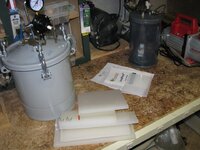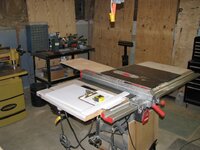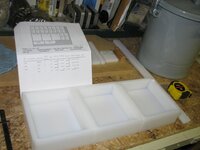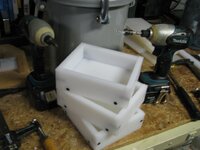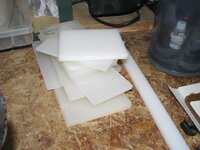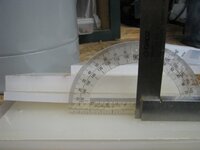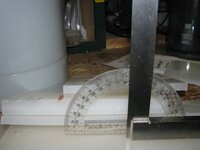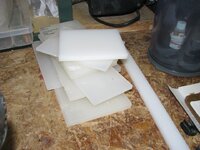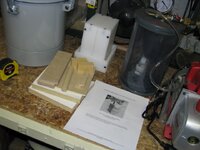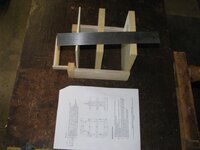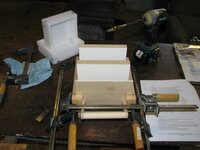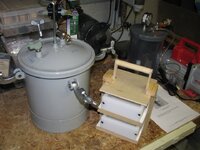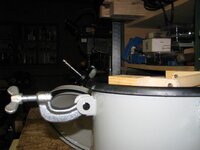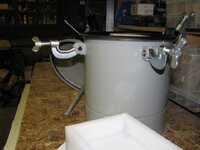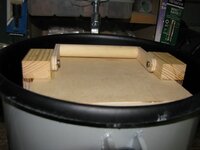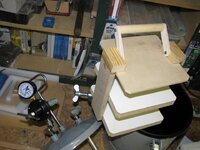Harpazo
Member
As I've admitted, I'm new to casting and stabilizing but am making my attempt at it. I took the documented advice from Curtis and probably not much else other than a few youtube videos on the subject.
I used the cut sheet Curtis put up and I think my table saw was off a smidge as I had to re-cut the bottoms to fit with the side pieces. One of them I will probably dis-assemble and remake into smaller molds for other single cast blanks.
The pressure pot is nothing special. Harbor Freight 2-1/2 gallon with a discount coupon for a cost of $79.99 plus tax. I have a small nailer compressor to power that when it's ready to use.
I'm not sure which resin I will use first but I'm pretty sold on the Alumilite products based on all I've been discovering. I'll probably try PR resins as well. Mainly because I can get a small amount to play with for comparison at least once.
Here are some photos of today's activity.
I used the cut sheet Curtis put up and I think my table saw was off a smidge as I had to re-cut the bottoms to fit with the side pieces. One of them I will probably dis-assemble and remake into smaller molds for other single cast blanks.
The pressure pot is nothing special. Harbor Freight 2-1/2 gallon with a discount coupon for a cost of $79.99 plus tax. I have a small nailer compressor to power that when it's ready to use.
I'm not sure which resin I will use first but I'm pretty sold on the Alumilite products based on all I've been discovering. I'll probably try PR resins as well. Mainly because I can get a small amount to play with for comparison at least once.
Here are some photos of today's activity.
Attachments
Last edited:

